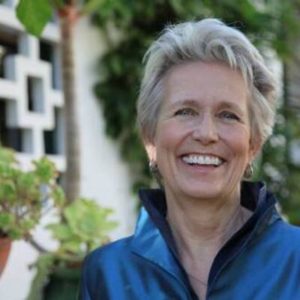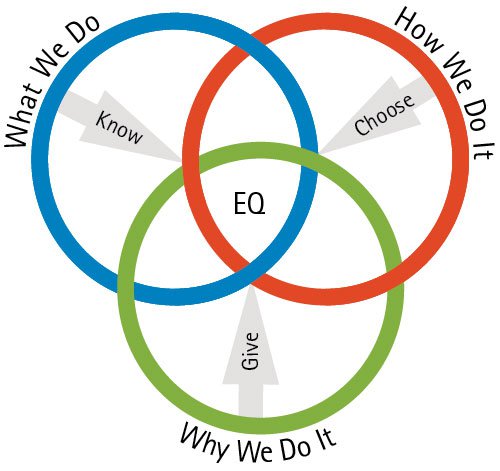 EQ Stories are profiles of people whose lives have been helped by emotional intelligence and Six Seconds’ coaching model. This story is from Six Seconds’ Marilynn Jorgensen, Master Coach/ICF Trainer.
EQ Stories are profiles of people whose lives have been helped by emotional intelligence and Six Seconds’ coaching model. This story is from Six Seconds’ Marilynn Jorgensen, Master Coach/ICF Trainer.
Why is emotional intelligence coaching so powerful? “Bill” is a senior leader who needed EQ:
” I was moving up in my career and yet I was participating in career derailing behavior. I was moving faster than my EQ could handle! Smarts and intelligence were fueling my vertical progress, but my emotional intelligence was delayed and these skills needed my awareness and attention.”
My client is in his mid-forties. He is an executive and lawyer by training and held a leadership position at a national nonprofit that was known for its groundbreaking work on social justice issues.
Bill sought coaching after receiving a 360 evaluation that showed that he was engaging in “career derailing behavior”. He was unaware of the impact this was creating with his team. We began with the SEI Leadership profile to gather data about which competencies might give us more information about the direction of our work together.
 The profile and the 6 Seconds model added great insight into his strengths and challenges. Know Yourself is the foundation of our model with Emotional Literacy and Recognizing Patterns being learnable skills to further enhance self-awareness. He could clearly see that the competencies involved in Know Yourself were challenging his everyday interactions. Old patterns were uncovered to show how he sometimes overcompensated to cover old insecurities. He could be overpowering without a regard for others’ opinions and lacked listening skills.
The profile and the 6 Seconds model added great insight into his strengths and challenges. Know Yourself is the foundation of our model with Emotional Literacy and Recognizing Patterns being learnable skills to further enhance self-awareness. He could clearly see that the competencies involved in Know Yourself were challenging his everyday interactions. Old patterns were uncovered to show how he sometimes overcompensated to cover old insecurities. He could be overpowering without a regard for others’ opinions and lacked listening skills.
The second pursuit of the 6 Seconds model is Choose Yourself. He was quite skilled in this area of the model with great intentions and action. However, without self knowledge this can support impulsive reactions without the ingredient of a slower thoughtful response.
The third pursuit of the model Give Yourself supports the forward direction of life purpose. He was quite driven and goal oriented but lacked Empathy for others. This left him feeling accomplished, but alone without the support of others.
 One year later Bill retook the profile. His scores were very aligned and well balanced. He increased his scores in KY and GY which balanced well with the CY portion of the profile. He reported feeling more in charge of himself and his pattern of over reactivity. He also learned to slow down and listen to the wisdom of others without having to always be the quick expert.
One year later Bill retook the profile. His scores were very aligned and well balanced. He increased his scores in KY and GY which balanced well with the CY portion of the profile. He reported feeling more in charge of himself and his pattern of over reactivity. He also learned to slow down and listen to the wisdom of others without having to always be the quick expert.
His new found confidence led him into a national search for other job opportunities. He was confident, self assured and engaged in two long-term interview processes where he was one of two final contestants for these senior leadership positions. He reports that he handled the challenges with enthusiasm, interest and emotional balance. He said, “I would never have had the confidence or emotional balance to engage in this process before learning about EQ.”
Here is an interview I did with Bill shortly after we completed our coaching sessions:
Marilynn: What motivated/interested you in seeking out a coach?
Bill: I was using emotions in the workplace but not effectively. There are dip days but now I am equipped to handle them differently. I also realize that there are days that I am not my best self and now I can recognize that and choose to do something differently.
Marilynn: What traits or qualities did you look for in choosing the right coach?
Bill: I was moving up in my career and yet I was participating in career derailing behavior. I was moving faster than my EQ could handle! Smarts and intelligence were fueling my vertical progress, but my emotional intelligence was delayed and these skills needed my awareness and attention.
Marilynn: What goals did you choose to focus on?
Bill: At first blush I thought I needed to stop having instantaneous, inappropriate emotional meltdowns. But then I realized that I had to work on my self-confidence and recognize what triggers were actively affecting my responses in my life. How to deal with these patterns of reaction helped me to slow down and PAUSE. I began learning to listen better. Then I noticed that I was getting triggered less frequently by these unconscious patterns or triggers. I also got to see that I lived with a deep-seated feeling of vulnerability. I found that that same feeling of vulnerability can fuel both positive and negative behavior. My vulnerability triggered me negatively and also motivated me to show up and get this done. Therefore I could accept this vulnerability and transform it to a positive end.
Marilynn: What impact did those changes have for you both professionally and personally?
Bill: Professionally I have a better work relationship with more of my colleagues. They come to me as a “thought partner”. I am the person they can come to me for listening and to reason things out. I feel more calm and can assess the situation and choose another resetting behavior if I am triggered. I am prepared to handle things.
Marilynn: What helped you the most?
Bill: Know Yourself…the bedrock stuff. I did not know that I was triggered so frequently! Recognizing Patterns in my daily life could be constant and yet I needed to recognize them and choose how to handle them. The Choose Yourself portion of the model gave me the tools…..Consequential Thinking allowed me to see and evaluate the choices in front of me. I now do this quickly by looking at the impact of my choices.
Marilynn: What hindered or challenged your progress?
Bill: Early on I wasn’t learning fast enough to get in front of the triggers! For a while I felt that I was learning but not able to plug in new behaviors. There was cognitive dissonance…a gap between the learning and the application! People were looking to see if I was going to react in the same way. Over time I kept showing up differently and people began trusting me….there was a natural progression.
Marilynn: What’s next for you?
Bill: As I grow and change it is about using my drive, my purpose at this time in my life….I am at mid-career. I am looking at the next half of my career. Thinking about all that I have learned I want to create another step in being a resource for others.
Marilynn: How do you feel about the future?
Bill: I am feeling very resourceful….more than a year ago.
View a video of Marilynn Jorgensen in action: Click here
- EQ Stories: Coaching a Career Change - April 8, 2015


it is interesting to see how he was able to work with knowing himself this way. i liked the idea that he felt it as a progress. most of the time people make it seem like an AHA moment that they switch into immediately. its not! the progress and gradual movement is important to let the change sink in and actually do the new ways that suit u the most
thanks for sharing Marilynn – I loved the interview and also the youtube that followed – I’ve sent the youtube to a friend in Boston – I think she’d love EQ Cert with you 🙂
Bill story provided a practical example of EQ in action… real change coming to real people. Useful case to help convince the skeptic.
thank you for giving me a clear look to eq by a real example. I am interested on navigating emotions. Can you give more information about how Bill improve his navigate emotions competency? Thank you so much
Yes, for Bill he began to practice noticing his reactive patterns that often left him “hijacked” by his emotions. He began to really slow down to take a step back….the 6 Seconds Pause…so he could evaluate his response before reacting without thinking. He also used his Consequential Thinking to evaluate the costs and benefits of crafting a mindful response vs. reacting impulsively. He was so great at slowing down because he began to see the HUGE benefits both for him and the people around him. Practicing at home with loved ones also became a practice arena that helped his confidence grow.
I read your very meaningful report. it gave me a good insight look by a real example. I am more interested on how Bill increase his navigating emotions competency. If you give more information about that i will be so pleased…Thank you so much
I am an MBTI certified Career Professional. Are there any upcoming EQi training programmes coming to Canada in the near future? Even parts of the US would be useful!
Many thanks,
Judith E.MacKinnon
Hi Judith,
There are many courses in the United States coming up this year. http://6seconds.org/events/